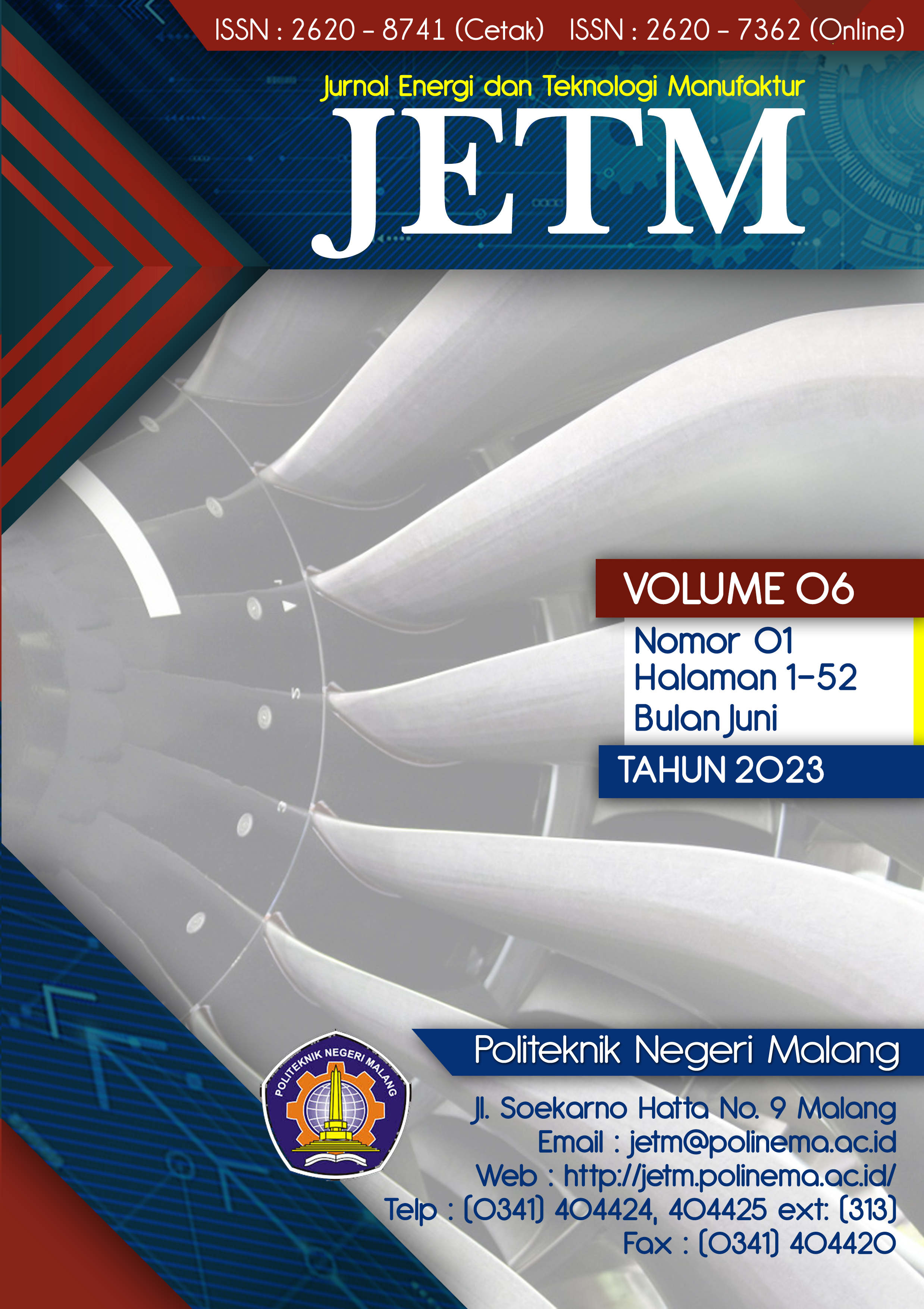PENGARUH KOMPOSISI KATALIS Cu-Fe/AL2O3 DAN PANJANG HOUSING CATALYTIC CONVERTER TERHADAP EMISI GAS BUANG MESIN 4 LANGKAH 125 CC
DOI:
https://doi.org/10.33795/jetm.v6i01.3065Keywords:
Catalytic converter, Cu, Fe, Emisi GasAbstract
Catalytic Converter is a device that is used to control exhaust gas emissions in the muffler. In the Catalytic Converter there is a media that is a catalyst, where the media is expected to help or accelerate the process of changing a substance (chemical reaction). Generally, the catalysts used today still use noble active metals, such as Platinum (Pt), Palladium (Pd), and Rhodium (Rh), which are low in availability and relatively expensive. Instead, other alternative materials are used, namely active transition metals such as Copper (Cu), Chromium (Cr), Nickel (Ni), and Iron (Fe) which are easy to find and have a lower price.
The purpose of this study was to determine the effect of the Cu-Fe/Al2O3 composition on the catalytic converter catalyst on the exhaust emissions of a 125cc 4 stroke engine. The research method used is the experimental method by mixing the composition of 10% Cu, 0% Fe, 90% Al2O3; 2.5% Cu, 2.5% Fe, 90% Al2O3; 5% Cu, 5% Fe, 90% Al2O3; 2.5% Cu, 7.5% Fe, 90% Al2O3; 0% Cu, 10% Fe, 90% Al2O3; on the catalyst and housing length variations with sizes of 30 mm, 60 mm.
The results of this study indicate that a catalyst with a housing length of 30 mm with a composition of 2.5 Cu – Fe 7.5% can reduce CO gas up to 0.8%. With an average of 1.82% compared to the standard exhaust which has an average of 4.86%, resulting in a decrease in CO gas of 3.06%. Also, there was a decrease in HC gas in the catalyst composition of 0% Cu – 10% Fe which was able to reduce HC gas up to 51 ppm. With an average of 53 ppm compared to the standard exhaust which has an average of 152 ppm, there is a decrease in HC gas of 99 ppm.





